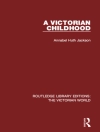Historians often assume a one-directional transmission of knowledge and ideas, leading to the establishment of spatial hierarchies defined as centres and peripheries. In recent decades, transnational and global history have contributed to a more inclusive understanding of intellectual and cultural exchanges that profoundly challenged the ways in which we draw our mental maps.
Covering the early modern and modern periods, Re-mapping Centre and Periphery investigates the asymmetrical and multi-directional structure of such encounters within Europe as well as in a global context. Exploring subjects from the shores of the Russian Empire to nation-making in Latin America, the international team of contributors demonstrates how, as products of human agency, centre and periphery are conditioned by mutual dependencies; rather than representing absolute categories of analysis, they are subjective constructions determined by a constantly changing discursive context.
Through its analysis, the volume develops and implements a conceptual framework for remapping centres and peripheries, based on conceptual history and discourse history. As such, it will appeal to a wide variety of historians, including transnational, cultural and intellectual, and historians of early modern and modern periods.
Praise for Re-mapping Centre and Periphery ‘… [A] fine examination and quantitative analysis of the meaning of metropolis by Tessa Hauswedell. … One of the strengths of the volume lies in its imaginative selection of cases that link these concerns to political, industrial, and agricultural modernisation, scientific, trade and municipal networks, nationalism and consumption, or the concepts of identity, margin and metropolis. … This collection of essays brings new insights into the multi-layered and challenging subject of centre and periphery. …The book thus makes a welcome contribution to ongoing efforts in the social and human sciences to “re-map centre and periphery”.’
Connections
Jadual kandungan
Introduction
1. Space and Asymmetric Difference in Historical Perspective: An Introduction
Axel Körner
Concepts
2. Rethinking Centre and Periphery in Historical Analysis: Land-based Modernization as an Alternative Model from the Peripheries
Marta Petrusewicz
3. Europe and the Concept of Margin
Jan Ifversen
4. After Identity: Mentalities, European Asymmetries and the Digital Turn
Joris van Eijnatten
Globalizing Peripheries
5. From the Baltic to the Pacific: Trade, Shipping and Exploration on the Shores of the Russian Empire
Michael North
6. Republics of Knowledge: Interpreting the World from Latin America
Nicola Miller
7. From Manchester and Lille to the World: Nineteenth Century Provincial Cities Conceptualize Their Place in the Global Order
Harry Stopes
Ideas and Commodities in Motion
8. Turning Constitutional History Upside Down: The 1820s Revolutions in the Mediterranean
Jens Späth
9. The Cosmopolitan Morphology of the National Discourse: Italy as a European Centre of Intellectual Modernity
Alessandro de Arcangelis
10. ‘The Greatest City the World has ever seen’: London’s Imperial and European Contexts in British public debates, 1870–1900
Tessa Hauswedell
11. Mediating Hybrids: Consumption and Transnationality
Hermione Giffard
Conclusion
Remapping Centre and Periphery: Concluding thoughts
Ulrich Tiedau
Mengenai Pengarang
Ulrich Tiedau is Associate Professor of Dutch at UCL and an Associate Director of the UCL Centre for Digital Humanities. In addition, he serves as editor-in-chief of Dutch Crossing: Journal of Low Countries Studies.












